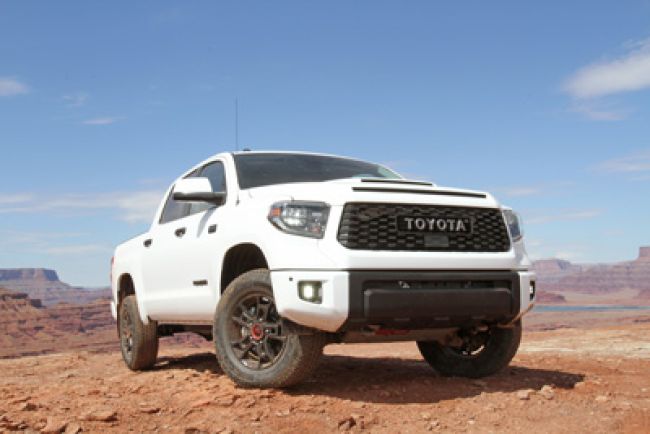
ADAS May Be a Mixed Bag in Your Shop
More vehicles with advanced driver assistance systems (ADAS) are showing up in utility fleet maintenance shops as vehicle manufacturers accelerate the introduction of these safety technologies into new models.
While there is little doubt that ADAS features – such as adaptive cruise control, radar-based collision avoidance systems and other technologies – can lower fleet costs by improving safety and reducing collisions, the issue for fleets is what effect these components will have on maintenance. Will these technologies increase maintenance costs by requiring more training or new equipment?
The early answer from fleet and industry consultants is that it is too soon to know definitively. Much depends on which components and features the fleet adds. In some cases, the technologies build on well-known foundation systems, so the need for training or additional equipment may be minimal, one supplier said. Some technologies, like radar, self adjust.
“Right now, it’s truly unknown what the expectations are,” said Darry Stuart, principal with DWS Fleet Management (www.darrystuart.com), a maintenance consulting firm. “It’s going to be challenging in the early days until it’s figured out.”
San Diego Gas & Electric added 10 small SUVs with adaptive cruise control, lane departure warning and emergency (crash avoidance) braking systems in early 2018. It’s still early, but so far results in the shop have been good, said Clint Marsh, fleet asset manager. “Maintenance for the radar-based systems is minimal and has not affected maintenance/parts costs for vehicles with this technology.”
Another factor that may moderate changes is that technicians should see many similarities with well-known systems and processes, said Mark Melletat, executive director of fleet sales and service with component supplier WABCO (www.wabco-auto.com). Brake-related technologies, such as stability control, build on the vehicle’s anti-lock braking system, so maintenance should be no different from the standard ABS maintenance, he said.
“All safety systems are based on foundation systems,” Melletat said. “We added electronics on brakes and developed ABS. ABS evolved to stability control, which uses the brake to automatically stabilize the driver’s input. Maintenance is no different than maintaining ABS; every time you turn the key on, the electronic system goes through tests.”
In the shop, technicians will plug into the J1939 connector and diagnose systems, similar to today, Melletat said.
Also, radar-based ADAS technologies are self-testing, Melletat noted. “[Radar] is always looking at the landscape, conducting self-tests. It will notify the driver of any potential issue. In general, you don’t have to do anything proactively. If the radar is blocked with debris, it will tell you.”
Each model year, more manufacturers are offering ADAS features on more models, some standard, some optional. Forward collision and lane departure features, for example, are standard on all 2019 Toyota vehicles, including the Tacoma full-size pickup, and optional on some Ford and Chevrolet models, including the F-150 and Silverado pickups, according to the Insurance Institute for Highway Safety (www.iihs.org). Medium-duty units, such as International’s WorkStar, have long had advanced braking systems, but whether they add additional ADAS technologies remains to be seen.
“Every year, customers are becoming more interested in advanced driver systems and are looking to implement them in their vehicles,” said Chad Semler, director of medium-duty product marketing for International Trucks (www.internationaltrucks.com). “Navistar has been able to support our customers’ increased interest in these systems and are well-positioned to handle future advancements.”
Ultimately, technicians may need different training and skills than what the traditional diesel techs are used to, said Stuart of DWS Fleet Management. “We’re coming into a new electronic age and, ironically, understanding the iron part of a diesel engine may not be as important as it was. That used to be what we considered complicated. Now, the diesel engine is almost the easiest thing on a truck.”
About the Author: Jim Galligan has extensive experience covering the commercial truck transportation and utility fleet sectors.
*****
Will Calibrations be a Bugaboo?
One area where advanced driver assistance system (ADAS) components may affect maintenance is in the need for calibrations, suggested Ben Johnson, director of product management with Mitchell1 (https://mitchell1.com), a maintenance software supplier.
Many vehicles now require recalibration of the outside-view cameras after a four-wheel thrust angle alignment, according to Mitchell1 documents. Calibration is important because the systems trigger safety actions based on input data. If the input data is incorrect, such as a camera registering an obstacle a few feet away from where it actually is, then the safety factor has been compromised to some level, Johnson said.
In another example, forward-looking radar – needed for adaptive cruise control – is just a black box typically mounted behind the grille on or near the radiator. If the radiator needs replacing, just the action of reattaching the radar may move it a few degrees off dead center, Johnson said.
While ADAS radar systems are self-correcting, according to Mark Melletat, executive director of fleet sales and service with ADAS component supplier WABCO, the issue of advanced calibrations – how to do them, who does them – may be something fleet maintenance shops will have to keep in mind down the road.

